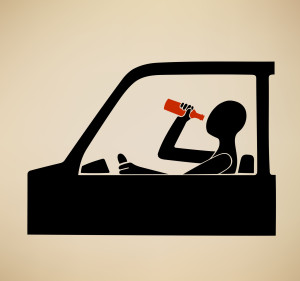
(Below is a guest post from our friends at The Law Offices of Zev Goldstein. Mr. Goldstein is a criminal defense attorney in New York who helps citizens contest all sorts of charges, from minor traffic tickets to cases of drunk driving or police brutality. If you ever end up in trouble in New York, give Mr. Goldstein a call.)
Everyone knows that they shouldn’t get behind the wheel of a car while under the influence of drugs or alcohol. Unfortunately, sometimes, you simply don’t realize that you’ve had one too many until it’s too late. You’ve already been pulled over, and the officer standing in front of you is asking you to get out of the car for a field sobriety test. Sounds great, right? You just complete their test, and then you can be on your way. A field sobriety test is even voluntary, so if you don’t want to go through it, you can always opt out. There’s just one problem; by the time they ask you to take a field sobriety test, most officers have already decided whether or not they’re going to try to convict you for driving under the influence.
The History of Standardized Field Sobriety Tests
On paper, field sobriety tests were designed to provide officers with a means of assessing inebriation without needing to bring the driver into the station for a breath test. Unfortunately, more often, these tests aren’t used to measure inebriation. They’re used as a tool to prove it: a way for an officer to provide quantifiable evidence that the driver was drunk at the time of the assessment.
The Problem with the “Science” of Field Sobriety Tests
Since they’re routinely used as evidence to convict people of drunk driving, you would assume that field sobriety tests would have scientific backing. Unfortunately, only three sobriety tests have a better than 50/50 chance of accurately predicting whether or not someone is drunk: the horizontal gaze nystagmus, the one leg stand, and the walk and turn. All of these tests used together have around an 83% accuracy rate for determining whether or not someone is under the influence—but only if they’re all properly administered.
In many cases, the arresting officer was trained by another officer, who was trained by another officer, and any science contained within the tests is often no longer part of the explanation. Not only that, there are a variety of factors that can lead to a misinterpretation of the results: medical conditions or disabilities, how tired a person is at the time of the test, and even how clumsy an individual is.
Attacking Standardized Field Sobriety Tests and Breath Tests
When a DUI charge has gone to trial, it’s important to immediately attack or even disprove the results of the sobriety and breath tests. Start with a commentary about the lack of scientific validity—even of the breath test, which can’t always reliably detect levels of intoxication. In fact, attacking the breath test from the start of the trial is a great first line of defense. Discuss the potential shortcomings of any electronic device, including those used in their homes. You want to plant seeds of doubt in the juror’s minds concerning the validity of that test early. Then, go after the arresting officer personally: how many people has he arrested based on the three tests that are considered accurate, only to discover that they weren’t actually inebriated? Does the officer really understand the point of these field tests, or are they simply doing what they were taught in a brief class? In particular, the HGN test is often administered incorrectly and frequently isn’t understood by the officer performing the test. In this test, the subject is supposed to watch and follow a small, moving object, usually a pen or a small flashlight, while the officer evaluates their eye movement. Jerky movements and inability to smoothly follow the object can be signs of inebriation, but it’s all left up to the officer’s interpretation. It’s the job of the lawyer to create reasonable doubt in the minds of the jurors, convincing them that even the evidence being presented is inaccurate.
The goal of most field sobriety tests is to incriminate the individual taking them, not to prove anything. Since officers use these tests as tools to bring in people who might not even be guilty of doing anything other than driving while tired, it’s important to fully understand them before you go to trial. A full understanding of the way field sobriety tests are administered, the biased stance of many officers, and the lack of scientific validity can significantly change the way those tests results are viewed by the jury.





